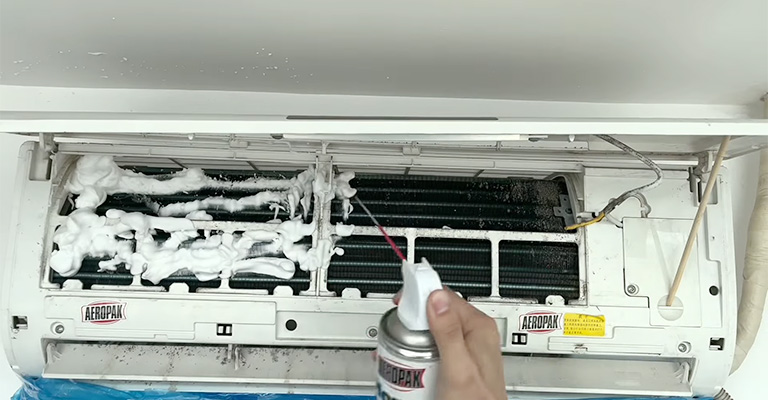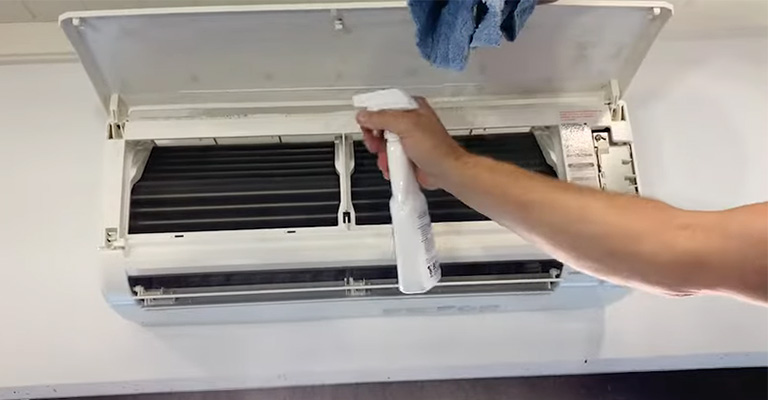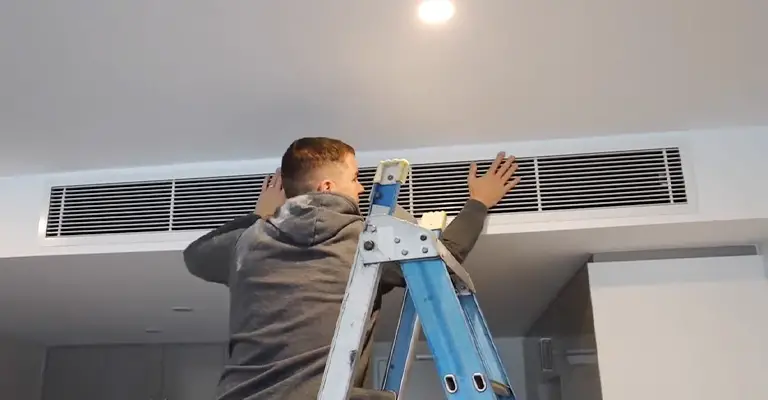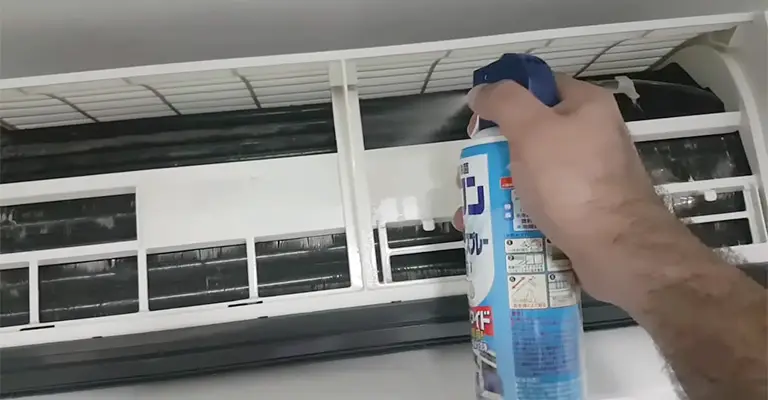Maintaining a pest-free living environment is a crucial aspect of home comfort and hygiene. When faced with unwelcome insects, it’s natural to seek quick and effective solutions.
However, the question arises: can bug spray be used as a remedy by spraying it into air vents?
As tempting as it may be to address bug concerns using this method, it’s important to delve into the potential ramifications. Spraying bug spray directly into air vents is not recommended.
Air vents are designed to circulate air throughout your living space, and introducing chemicals from bug sprays into the ventilation system can have several potential negative effects.
Can You Spray Bug Spray In Air vent?
Your options are limited, but the short answer is yes. A fold up glue trap can be inserted inside the vent after the vent has been removed.
It is unlikely that you will catch roaches or spiders with a trap since they can easily walk around it. In addition, peanut butter bait will give your home the smell of a 3-day old school lunch sack while enticing the roach.
You might want to consider that.
There is a possibility of spraying around the vent, however, drywall absorbs liquids and it is doubtful that any residual would be on the surface in sufficient quantity to cause a lethal reaction.
In addition, you may still be exposed to airborne chemicals when the heat or air conditioner is turned on. The placement of a trap inside some vents is difficult since they are vertical.
Usually what I do for these types is cover the vent with wide strips of clear packing tape, leaving thin slits about 1/4 to 1/2 inch wide, so that the air will still pass through, but the insect will get stuck and die.
Masking or duct tape will likely not come off cleanly, but packing tape will allow you to see into the vent.
Dealing With Insects
You should keep insects out of your HVAC system if they want to colonize it. The ductwork in your home should be sealed.
It is easy for insects to invade your system if certain segments or ducts are loose and have holes or cracks. These areas need to be repaired by your HVAC company.
In the case of ducts or vents, it is not recommended to spray pesticides on them. This will not be effective, and you may end up with toxic airborne particles dispersed into your home.
Why Can’t I Spray Bug Spray In Air Vents?

Spraying bug spray directly into air vents is not advisable for several important reasons. Here’s why you should avoid this practice:
Air Quality Concerns
Bug sprays often contain chemicals that can be harmful if inhaled in concentrated amounts.
Spraying bug spray into air vents could lead to these chemicals being distributed throughout your home, potentially affecting indoor air quality, and posing health risks, especially for those with respiratory issues.
System Damage
Bug spray may contain ingredients that could damage the components of your HVAC (Heating, Ventilation, and Air Conditioning) system.
The chemicals might degrade the materials within the system, leading to reduced efficiency, malfunctions, or costly repairs.
Odor
The strong scent of bug spray could linger in your home’s air for an extended period, making your living environment unpleasant.
If you’re dealing with a bug infestation or want to prevent insects from entering your home through the air vents, it’s best to address the issue through appropriate methods.
How Can I Spray Bug Spray If I Really Need To?

If you are having problems with bugs that need to be sprayed in your HVAC vents, consider going out for an overnight camping trip and using bug bombs to suppress the problem.
Be sure to open all cupboards, drawers, and rooms and throw away all food in non-airtight containers.
The HVAC should be turned off and all vents should be fully opened. Once you return, vent the house for 30 minutes, and wash down all counters and cooking surfaces.
Before putting away any cooking or eating utensils (cups, pans, plates, flatware, …), wash down the cabinets and drawers where they are stored. You should all do this at the same time if you live in a multi-family building.
How To Deter Bugs In HVAC Components?

Your home is always surrounded by insect pests. Especially through your vents and ductwork, your HVAC system is a major entry point for bacteria.
It may surprise you to learn that termites, ants, cockroaches, spiders, silverfish, earwigs, and stinkbugs have entered your home through vents.
Ants and the Condenser
The condenser of an outdoor air conditioner is a common site for insect infestations. Condensers attract ants in particular because of their electromagnetic fields.
Additionally, insects and other pests enjoy the cozy environment inside the condenser unit.
Your condenser unit may also have ants clustered inside the contactor, which can result in the part being damaged and the unit failing.
If you hire a professional pest control company to treat your home and lawn, that company can spray around the area near your condenser when they treat your home and lawn.
During a maintenance tune-up, your HVAC professional will thoroughly clean your system and suggest ways to prevent ants from entering.
DIY Method
In a plastic spray bottle, combine 1/4 cup white vinegar with 2 cups water and shake vigorously. Air ducts should be sprayed lightly with the solution.
The surface should not be saturated or any solution should not drip into the air duct. After spraying the solution, allow it to dry.
The Bottom Line
Is there anything you can do when a spider or roach escapes into an air vent when you are chasing it? Guess what will come out in about 10 minutes when you douse the opening with Raid or sprinkle some boric acid dust into it.
Right, you’ll either have aerosol smells floating around your living area or airborne pesticide particles floating around it, and sometimes this can last for days.
Spraying anything into air vents or air returns is not a good idea, and you should always avoid doing so.







